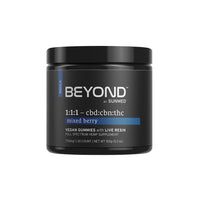How long does it take a dog to digest food?

Medically Reviewed by: Dr. Caley Scott, ND
The basics of digestion are pretty intuitive when we look at human anatomy and the research out there. Therefore, we might think that the digestive processes of other animals are more or less equal to our own, but this isn’t always the case. Even mammals like dogs and cats can have very different digestive journeys, meaning their health needs are also unique and varied.
From the perspective of dog owners, knowing more about digestion and related issues can help you make better dietary choices for your dog and increase their quality of life. This starts by learning simple concepts like how long it takes for a dog to digest food, and what supplements might benefit them as they age.
This article will outline the details of the digestive process in dogs in simple terms, giving you a foundation of knowledge to make these better choices. We’ll also offer some recommendations that will help your dog thrive in the face of digestive challenges and more. There’s always something new to learn as a dog owner, and every bit counts.
Why is dog digestion important for owners?
Digestion is one of the most critical processes in a dog’s body, especially as they’re growing. Dogs need specific nutrients, and they are more sensitive to certain compounds, making nutrition less intuitive for dog owners as they navigate the first stages of ownership. While dog food makes it easy to provide the right nutrition and serving sizes, things get more complicated when it comes to feeding table scraps, treats, and other forms of food.
Additionally, dogs are naturally curious and tend to explore with their tastebuds. This means that dogs are often eating things they shouldn’t, which can wreak havoc on an already sensitive digestive system. Proper training can limit what a dog consumes, but even the best owners find that their dogs end up swallowing random items that can impact their health negatively.
How does a dog’s digestive system work?
Dog digestion follows a similar pattern to the one we experience as humans, but with a few key differences. Let’s walk through the process step by step and see what happens on an anatomical level. We’ll also outline how long each phase takes in order to give you a more complete understanding of the timing involved from A to Z.
Salivation and ingestion
When a dog senses food or is presented with the idea of food, a powerful salivation mechanism kicks in, marking the first stage of the digestion process. Dog owners know that this happens fast, even before the food is in the bowl, on the plate, or tossed into the air.
Saliva is required to lubricate food, especially dry dog food pellets, which tend to lack the moisture of meat. Depending on the dog’s breed and age, different amounts of saliva will be generated, but across the board, saliva is produced within just a few seconds.
This is likely due to the genetic lineage of dogs which requires them to quickly seize opportunities to eat, whereas humans may take longer to generate saliva due to a slower feeding process.
Chewing and swallowing
By the time food reaches a dog’s mouth, saliva is flowing, and most food is swallowed between chews. While dogs have large incisors meant for ripping apart meat, this isn’t the staple of their modern diets, meaning the chewing process is mostly bypassed. However, smaller dogs may find it necessary to chew food for longer, and it could take several minutes for a meal to be consumed.
Still, regardless of a dog’s size or breed, this stage happens quickly. Active dogs in particular are typically eager to eat as much as possible in a short timeframe without pausing for breath. This means they’ll often clean the bowl in under a minute as the next phase of digestion begins.
Stomach and small intestine
Once swallowed, food quickly moves to a dog’s stomach, where it is mixed with highly acidic gastric juices. These juices contain powerful digestive enzymes and turn food into a liquid substance over the course of several hours.
Specifically, a dog’s digestive system is focused on breaking down proteins to obtain usable amino acids that can be absorbed and utilized. Once the food is broken down, it turns into a semi-liquid substance called chyme, which is then moved to the small intestine.
Depending on a dog’s size and the efficiency of their digestion, this step can take anywhere from two to four hours. If a dog has a diet higher in fiber, that process might take even longer, as fiber is not completely digested like proteins, fats, and carbohydrates. However, keep in mind that modern dog food is designed for rapid digestion, and the small pellet form makes it easier for the nutrients to be extracted in an efficient timeframe.
The small intestine is where digestion enters full swing, with the release of bile and various pancreatic enzymes. Here, nutrient absorption is at its peak, and broken-down nutrients are absorbed through vessels in the walls of the intestinal tract. Food may spend another two to four hours in the small intestine before it moves on to the large intestine.
Large intestine and elimination
Undigested and unabsorbed food material enters the large intestine, where any remaining water and electrolytes are absorbed by its lining. This is also where microbial fermentation occurs, as beneficial bacteria can help ferment some of this material to maintain a healthy microbiome.
Depending on the dog’s hydration status and the level of fiber in their diet, this phase can last anywhere from 12 to 20 hours. Once the majority of water and the last bit of nutrient content is absorbed, the material is eliminated, and the digestive process is complete.
All in all, a dog’s digestion can range anywhere from 8 to 24 hours, meaning there is a huge range and variability in the timing of this process. With so many factors at play, it’s hard to predict exactly how long the process will take in full.
What are some common digestive issues for dogs?
Digestive issues are common among certain breeds, but they can affect all dogs at some point in their lives.
Gastroenteritis, or the inflammation of the stomach and intestines, is the most widespread cause of vomiting, diarrhea, and loss of appetite in dogs. While gastroenteritis can be caused by a range of issues, it’s usually due to a dog eating the wrong things, or a bacterial infection.
In addition to indigestion and parasites, dogs can also experience more dangerous digestive issues. These issues should be addressed by a veterinary professional and dog owners should defer to the experts to have them handled properly.
How can dog owners help their pets with digestion?
Dog owners are always looking for new ways to help their pets live best, and improving digestion is just one of many possible pathways. While a dog may appear to have perfect digestion and elimination, there are some subtle signs to look for that may indicate a deeper problem or some degree of discomfort.
For instance, if a dog has a change of appetite or is rapidly losing weight, an owner may be moved to make a dietary change for their pet or introduce natural medicines that can help soothe their stomach and intestines. Owners will also want to look for signs like lethargy, excessive thirst or urination, and changes in stool appearance.
In other words, any unusual behavior or patterns in a dog’s health should not be ignored. Even if there isn’t a digestive issue at play, attentive owners will know intuitively if something is off with their dog. Still, because digestive issues are so common among dogs, starting with dietary adjustments or supplementation is often a good place to start.
Why are probiotics so important for dogs?
There are many supplements that can be used to alleviate discomfort or help dogs with their digestion, but probiotics are among the best for several reasons.
These microorganisms work by maintaining balance in the gut flora and supporting the beneficial bacteria that is so important for healthy nutrient absorption and general gut health. Quality probiotics will also support a dog’s immune system, helping them combat any pathogens they may accidentally ingest.
Just like humans need healthy bacteria to maintain a range of functions in the body, so do dogs — the right probiotic can make a big difference in many areas at once.
What should you look for in a probiotic supplement for dogs?
When looking for the best probiotic supplements for dogs, start by looking for products that are formulated and approved by real veterinarians. This not only provides owners with the assurance of an approved product, but it typically means the quality of the ingredients is better across the board.
Also, the best probiotic supplements for dogs contain more than just good bacteria. For example, our best-selling Broad Spectrum Probiotic CBD Pet Chews are packed with high-quality hemp extract, helping dogs balance their endocannabinoid systems for soothed tension, less discomfort, and overall well-being.
Cannabinol has been shown to be highly effective in 5mg servings per 25 pounds for dogs, as their endocannabinoid systems are surprisingly similar to ours. No matter your dog’s age or activity level, this small yet potent serving of CBD can be a daily difference maker.*
Additionally, our blend includes extras like glutamine for better digestion, pumpkin powder for more nutrients, and a powerful prebiotic compound inulin. These extras can help your dog make the most of the food they eat, and provide extra support at every phase of digestion, from their first bite to the last nutrient absorbed. *
While your dog may see a positive change from taking a basic probiotic, they may not be getting all the benefits they need. With a complete formulation like our Broad Spectrum Probiotic CBD Pet Chews, you’re giving your dog the very best, which is exactly what they deserve.*
The bottom line
You may know more than you ever intended to know about your dog’s digestive system, but now you have a much better idea of how to care for your pet in the best way possible. With this information, you can closely monitor their eating habits, look for indications of indigestion, and give them probiotic supplements that make a difference in their digestive health and more.
Caring for your dog starts with the basics, such as daily activity, proper diet, and plenty of love and care. If you think your dog could benefit from an extra level of support in digestion and quality of life, our CBD for pets has everything you need to provide that.*
Pet ownership is a journey, and there is always a new way to be a better pet parent. Start with Sunmed’s recommendations, and you’ll be able to provide them with a greater level of care than ever before.
Sources:
Comparison of canine and human gastrointestinal physiology | NIH
Gut Probiotics and Health of Dogs and Cats: Benefits, Applications, and Underlying Mechanisms | NIH
Microbiota and probiotics in canine and feline welfare | NIH













